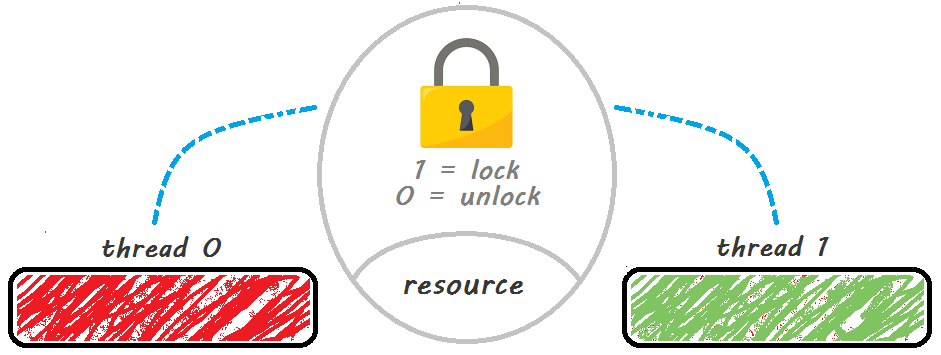Semaphore is a synchronization mechanism. In more words, semaphores are a technique for coordinating or synchronizing activities in which multiple processes compete for the same resources. There are 2 types of semaphores: Binary semaphores & Counting semaphores. But our focus would be on binary semaphore only. That too binary semaphore example between threads in C language specifically. If you are in search of semaphore between processes then see this.
- As its name suggest binary semaphore can have a value either 0 or 1.
- It means binary semaphore protect access to a SINGLE shared resource.
- So the internal counter of the semaphore can only take the values 1 or 0.
- When a resource is available, the process in charge set the semaphore to 1 else 0.
Example of Binary semaphore example between threads in C using POSIX-semaphore
#include <stdio.h>
#include <pthread.h>
#include <semaphore.h>
int a, b;
sem_t sem;
void ScanNumbers(void *ptr){
for (;;){
printf("%s", (char *)ptr);
scanf("%d %d", &a, &b);
sem_post(&sem);
usleep(100 * 1000);
}
}
void SumAndPrint(void *ptr){
for (;;){
sem_wait(&sem);
printf("%s %d\n", (char *)ptr, a + b);
}
}
int main()
{
pthread_t thread1;
pthread_t thread2;
char *Msg1 = "Enter Number Two No\n";
char *Msg2 = "sum = ";
/*
int sem_init(
sem_t *sem // pointer to semaphore variable ,
int pshared // If = 0: can be used in threads only, else in process,
unsigned int value // initial value of the semaphore counter
);
return value 0 on successful & -1 on failure
*/
sem_init(&sem, 0, 0); // Can also use `sem = sem_open( "SemaphoreName", O_CREAT, 0777, 0);`
pthread_create(&thread1, NULL, (void *)ScanNumbers, (void *)Msg1);
pthread_create(&thread2, NULL, (void *)SumAndPrint, (void *)Msg2);
pthread_join(thread1, NULL);
pthread_join(thread2, NULL);
printf("Wait For Both Thread Finished\n");
sem_destroy(&sem); // Can also use `sem_unlink( "SemaphoreName");`
return 0;
}
sem_init(): Initialize semaphoresem_destroy(): releases all resourcessem_wait(): Wait for the semaphore to acquiresem_post(): Release semaphoresem_trywait(): Only works when the caller does not have to waitsem_getvalue(): Reads the counter value of the semaphoresem_open(): Connects to, & optionally creates, a named semaphore( likesem_init())sem_unlink(): Ends connection to an open semaphore & causes the semaphore to be removed when the last process closes it( likesem_destroy())
General pointers
- Semaphore’s internal implementation is like memory-mapped file(mmap)
- Two standards of semaphore mechanism
- POSIX-semaphore:
sem_init(),sem_destroy(),sem_wait(),sem_post(),sem_trywait(),sem_getvalue(),sem_open(),sem_unlink() - System-V-semaphore:
semget(),semop(),semctl()
- POSIX-semaphore:
